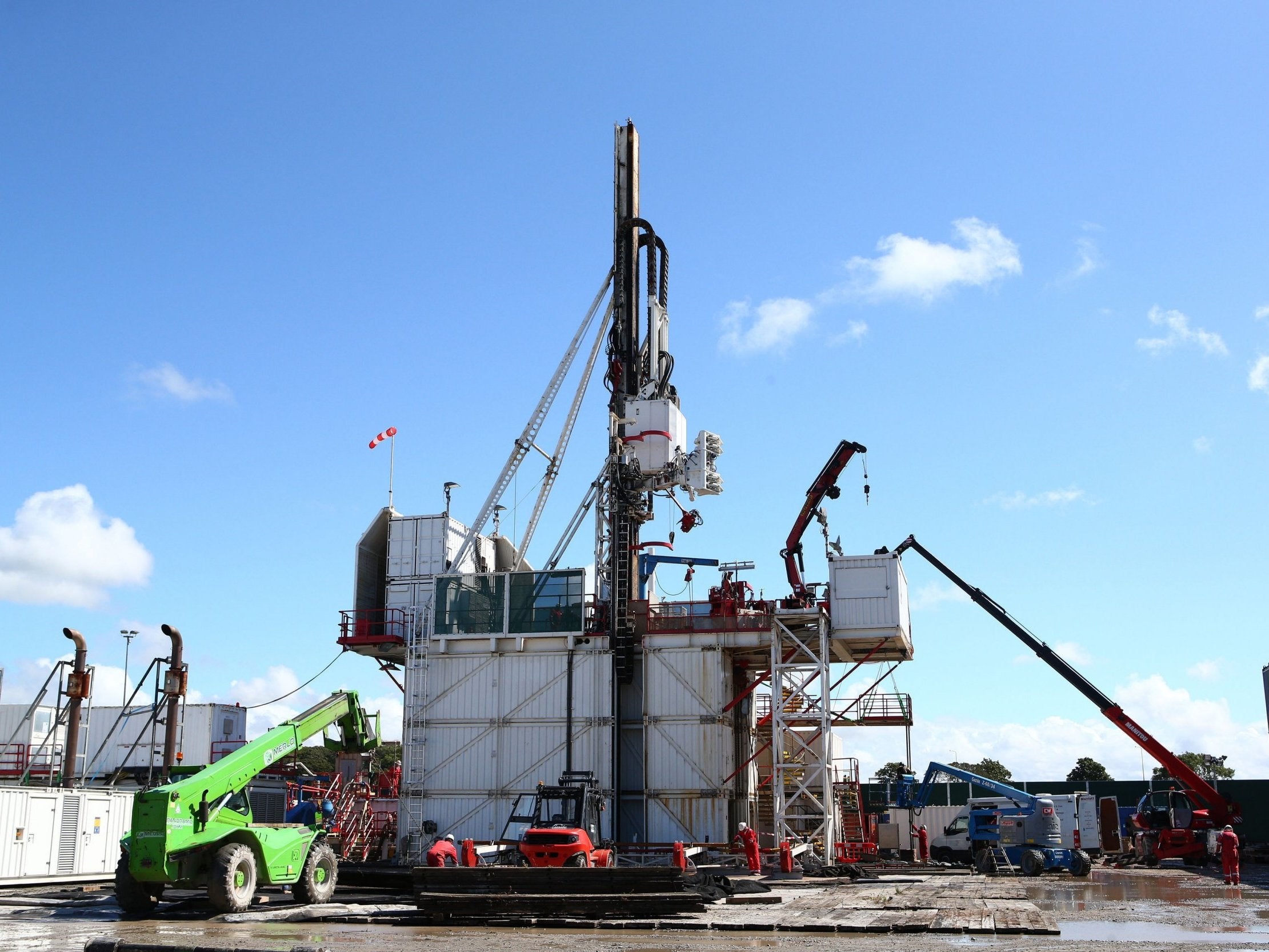Climate crisis: Lancashire fracking site ‘leaked emissions equivalent to 142 transatlantic flights’
Around 4.2 tonnes of methane leaked from site during one week of monitoring in January 2019

Fracking for shale gas in the UK has, for now, come to a halt with little interest from the government in pursuing the fossil fuel after drilling prompted a national outcry, huge local opposition and regular earthquakes.
Drilling by the company Cuadrilla ceased in Lancashire in September 2019, but not before a considerable amount of the powerful greenhouse gas methane leaked into the earth’s atmosphere, a new study suggests.
Researchers at Manchester University took measurements at a monitoring station near the Preston New Road drilling site, and used drones to make assessments from the air during the unintended methane leak.
The research team said during one week of monitoring in January 2019, the amount of methane leaked was around 4.2 tonnes - the equivalent environmental impact of 142 transatlantic flights.
The researchers’ analysis revealed it was the result of the release of non-combusted methane from the flare stack at the shale gas site following operations to clean out the 2.3km deep shale gas well.
During the leak drones were deployed to map the vertical and horizontal extent of the methane plume.
Dr Jacob Shaw, research associate from the University of Manchester and lead author of the paper said: “The dangerous consequences of global warming are now beginning to become evident. Routine monitoring and scrutiny of the fossil fuel industry is crucial if we are to curb impacts, and also if we are to meet the UK government’s net zero targets.”
The team said they found that the independent estimates of methane emissions during the early stages of this kind of drilling activity are not routinely made, nor are they generally examined closely during well development, well-unloading and well-stimulation activities.
As a result, they said greenhouse gas emissions are currently under-represented in the total lifecycle analysis of the overall carbon footprint of UK fracking activity.
The researchers said it will be important to include such processes in any future evaluations of unconventional gas developments.
Professor Grant Allen, professor of atmospheric physics and leader of the project at the University of Manchester, said: “Our work shows that atmospheric monitoring of shale gas activity is crucial to meaningfully assess any role that the industry may have in the UK’s future energy mix and whether it can (or cannot) be consistent with the UK’s stated aim of achieving net-zero carbon emissions by 2015.
“This work informs that debate and provides new data on emissions from well-clearing activities that must be captured in industry life cycle assessments, and should be used to inform regulatory oversight and industrial practices surrounding venting activities such as the event quantified here. Such emissions should be avoided wherever possible.”
In June this year, environment minister Kwasi Kwarteng said fracking was “over”.
He told the BBC: “We had a moratorium on fracking last year and frankly the debate’s moved on. It is not something that we’re looking to do.
“We’ve always said we’d be evidence-backed, so if there was a time when the science evidence changed our minds, we would be open to that. But for now, fracking is over.”
A spokesperson for Cuadrilla told The Independent: “The methane release cited by the Manchester University study occurred during the early stages of testing the flow of natural gas from the Preston New Road 1z well.
“As the hydraulic fracturing of the well had been curtailed early and the shale only partially fractured the methane flow from the shale was significantly lower than would have been normal. Nitrogen was used to assist initial gas flow from the well and as the nitrogen/methane mixture could not be combusted it was temporarily vented under controlled conditions to flare.
“This operation is a standard oil and gas operating technique and a permitted activity by the Environment Agency. There were no breaches of air quality limits and in local or UK terms, the volume of methane emitted was small, being approximately equivalent to the annual emissions of a herd of 50 cows.”
The research was published in the Journal of the Air and Waste Management Association.
Subscribe to Independent Premium to bookmark this article
Want to bookmark your favourite articles and stories to read or reference later? Start your Independent Premium subscription today.

Join our commenting forum
Join thought-provoking conversations, follow other Independent readers and see their replies